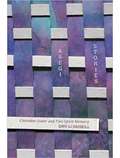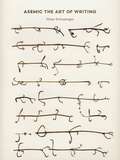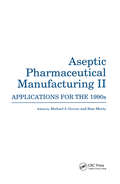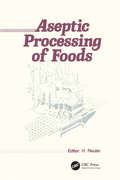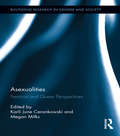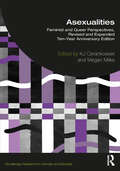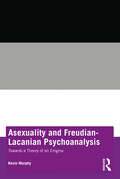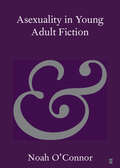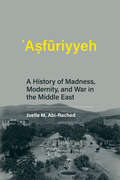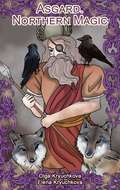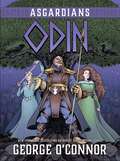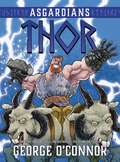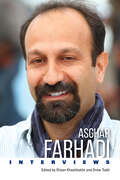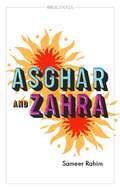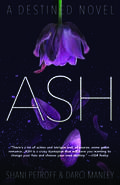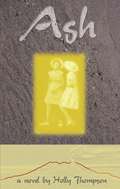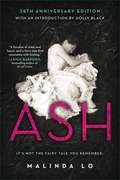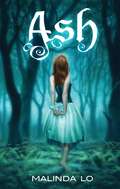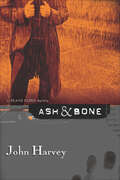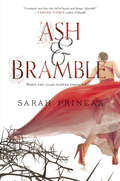- Table View
- List View
Asda (B)
by James Weber Michael BeerDescribes Archie Norman's efforts over a five-year period to turn around the company by regaining financial control, delivering management, creating experimental projects where individuals felt free to innovate, instituting a back-to-roots strategy that put customers first, and creating a culture characterized by high involvement of employees and fast innovation and implementation of new ideas.
Asea Brown Boveri
by Robert L. Simons Christopher A. BartlettIn 1987, two European rivals--Asea AB of Sweden and BBC Brown Boveri Ltd. of Switzerland--merged to form Asea Brown Boveri. The new company employed 150,000 employees in 850 legal entities operating in 140 countries. The case describes the challenges facing Percy Barnevik--the organization's leader--and how he resolved those challenges through staffing, communicating priorities, new structural alignments, and information and reporting systems.
Asegi Stories: Cherokee Queer and Two-Spirit Memory
by Qwo-Li DriskillIn Cherokee Asegi udanto refers to people who either fall outside of men’s and women’s roles or who mix men’s and women’s roles. Asegi, which translates as “strange,” is also used by some Cherokees as a term similar to “queer.” For author Qwo-Li Driskill, asegi provides a means by which to reread Cherokee history in order to listen for those stories rendered “strange” by colonial heteropatriarchy. As the first full-length work of scholarship to develop a tribally specific Indigenous Queer or Two-Spirit critique, Asegi Stories examines gender and sexuality in Cherokee cultural memory, how they shape the present, and how they can influence the future. The theoretical and methodological underpinnings of Asegi Stories derive from activist, artistic, and intellectual genealogies, referred to as “dissent lines” by Maori scholar Linda Tuhiwai Smith. Driskill intertwines Cherokee and other Indigenous traditions, women of color feminisms, grassroots activisms, queer and Trans studies and politics, rhetoric, Native studies, and decolonial politics. Drawing from oral histories and archival documents in order to articulate Cherokee-centered Two-Spirit critiques, Driskill contributes to the larger intertribal movements for social justice.
Asemic: The Art of Writing
by Peter SchwengerThe first critical study of writing without language In recent years, asemic writing—writing without language—has exploded in popularity, with anthologies, a large-scale art exhibition, and flourishing interest on sites like tumblr, YouTube, Pinterest, and Instagram. Yet this burgeoning, fascinating field has never received a dedicated critical study. Asemic fills that gap, proposing new ways of rethinking the nature of writing.Pioneered in the work of creators such as Henri Michaux, Roland Barthes, and Cy Twombly, asemic writing consolidated as a movement in the 1990s. Author Peter Schwenger first covers these &“asemic ancestors&” before moving to current practitioners such as Michael Jacobson, Rosaire Appel, and Christopher Skinner, exploring how asemic writing has evolved and gained importance in the contemporary era.Asemic includes intriguing revelations about the relation of asemic writing to Chinese characters, the possibility of asemic writing in nature, and explanations of how we can read without language. Written in a lively style, this book will engage scholars of contemporary art and literary theory, as well as anyone interested in what writing was and what it is now in the process of becoming.
Aseptic Pharmaceutical Manufacturing II: Applications for the 1990s
by Michael J. Groves; Ram MurtyAsceptic Pharmaceutical Manufacturing II explores the sophisticated technology, developments, and applications that allow aseptic processing to approach the sterility levels achieved with terminal sterilization. Written by experts in sterile manufacturing, this book covers aseptic technology, developments, and applications and makes a valuable contribution to understanding the issues involved in aseptic manufacture. Topics include the processing of biopharmaceuticals, lyophilization, personnel training, radiopharmaceuticals, hydrogen peroxide vapor sterilization, regulatory requirements, validation, and quality systems.
Aseptic Processing of Foods
by Helmut ReuterAseptic food processing has become important as a safe and effective method for the preparing and packaging of a variety of foods. This recent book, prepared by a team of European specialists, provides a detailed guide and reference to aseptic food processing technology. All aspects are presented systematically: principles, practice, equipment, applications, packages and packaging, quality control, and safety. All applicable food and beverage categories are examined. More than 130 photographs, diagrams, and other schematics illustrate equipment and their function and a variety of procedures. Tables and graphs provide important quantitative data in convenient form.
Asexualities: Feminist and Queer Perspectives (Routledge Research in Gender and Society #40)
by Megan Milks Karli June CerankowskiWhat is so radical about not having sex? To answer this question, this collection of essays explores the feminist and queer politics of asexuality. Asexuality is predominantly understood as an orientation describing people who do not experience sexual attraction. In this multidisciplinary volume, the authors expand this definition of asexuality to account for the complexities of gender, race, disability, and medical discourse. Together, these essays challenge the ways in which we imagine gender and sexuality in relation to desire and sexual practice. Asexualities provides a critical reevaluation of even the most radical queer theorizations of sexuality. Going beyond a call for acceptance of asexuality as a legitimate and valid sexual orientation, the authors offer a critical examination of many of the most fundamental ways in which we categorize and index sexualities, desires, bodies, and practices. As the first book-length collection of critical essays ever produced on the topic of asexuality, this book serves as a foundational text in a growing field of study. It also aims to reshape the directions of feminist and queer studies, and to radically alter popular conceptions of sex and desire. Including units addressing theories of asexual orientation; the politics of asexuality; asexuality in media culture; masculinity and asexuality; health, disability, and medicalization; and asexual literary theory, Asexualities will be of interest to scholars and students in sexuality, gender, sociology, cultural studies, disability studies, and media culture.
Asexualities: Feminist and Queer Perspectives, Revised and Expanded Ten-Year Anniversary Edition (Routledge Research in Gender and Society)
by Megan Milks Kj CerankowskiAs one of the first book-length collections of critical essays on the topic of asexuality, Asexualities: Feminist and Queer Perspectives became a foundational text in the burgeoning field of asexuality studies. This revised and expanded ten-year anniversary edition both celebrates the book’s impact and features new scholarship at the vanguard of the field.While this edition includes some of the most-cited original chapters, it also features critical updates as well as new, innovative work by both up-and-coming and established scholars and activists from around the world. It brings in more global perspectives on asexualities, engages intersectionally with international formations of race and racialization, critiques global capital’s effects on identity and kinship, examines how digital worlds shape lived realities, considers posthuman becomings, experiments with the form of the manifesto, and imagines love and relation in ecologies that exceed and even supersede the human.This cutting-edge, multidisciplinary, interdisciplinary book serves as a valuable resource for everyone—from those who are just beginning their critical exploration of asexualities to advanced researchers who seek to deepen their theoretical engagements with the field.
Asexuality and Freudian-Lacanian Psychoanalysis: Towards a Theory of an Enigma
by Kevin MurphyAsexuality and Freudian-Lacanian Psychoanalysis: Towards a Theory of an Enigma proposes that asexuality is a libidinally founded desire for no sexual desire, a concept not included in psychoanalytic theory up to now. "Asexuality" is defined as the experience of having no sexual attraction for another person; as an emerging self-defined sexual orientation, it has received practically no attention from psychoanalytic research. This book is the first sustained piece of exploratory and theoretical research from a Freudian-Lacanian perspective. Using Freudian concepts to understand the intricacies of human sexual desire, this volume will also employ Lacanian conceptual tools to understand how asexuality might sustain itself despite the absence of Other-directed sexual desire. This book argues that asexuality holds a mirror to contemporary sexualized society which assumes sexual attraction and eroticism as the benchmarks for experiencing sexual desire. It also argues that asexuality may be a previously unrecognized form of human sexuality which can contribute new understandings to the range and breadth of what it means to be a sexual being. This book will be of interest to anyone in the area of asexuality or sexuality – psychoanalysts, psychotherapists, psychologists, psychiatrists, university lecturers, researchers, students or those simply curious about the possibilities of the human sex drive.
Asexuality in Young Adult Fiction (Elements in Publishing and Book Culture)
by Noah O'ConnorThe Asexual Exile trope positions asexual characters outside of society by portraying them as loners, inhuman, or adjacent to death. This research identifies trends in these portrayals by considering a corpus of 42 traditionally published novels of Young Adult fiction featuring asexual protagonists. A distant reading of this corpus finds that the Asexual Exile trope is employed in approximately two-thirds of cases. The author analyses how this trope permutates across genres, and the frequency of its endorsement and subversion by these narratives. Presenting the first extensive investigation into the Asexual Exile trope in YA fiction, this research investigates how asexual characters are Othered as not truly alive, and how these messages then rebound into necropolitical cultural understandings of asexual people as expendable. The results prompt the questions: how does the Asexual Exile trope influence Young Adult readers in the formation of their ideologies? How can publishers do better?
Asfuriyyeh: A History of Madness, Modernity, and War in the Middle East (Culture and Psychiatry)
by Joelle M Abi-RachedThe development of psychiatry in the Middle East, viewed through the history of one of the first modern mental hospitals in the region.ʿAṣfūriyyeh (formally, the Lebanon Hospital for the Insane) was founded by a Swiss Quaker missionary in 1896, one of the first modern psychiatric hospitals in the Middle East. It closed its doors in 1982, a victim of Lebanon's brutal fifteen-year civil war. In this book, Joelle Abi-Rached uses the rise and fall of ʿAṣfūriyyeh as a lens through which to examine the development of modern psychiatric theory and practice in the region as well as the sociopolitical history of modern Lebanon.
Asgard: Northern Magic
by Olga Kryuchkova; Elena KryuchkovaThis book will acquaint you with many of Norse paganism’s key concepts and practices, specifically those originating in Scandinavia, Germany and Iceland. Norse paganism is the ancient religion of the Germanic peoples and is often associated with runic magic. Runes are ancient symbols that were used by the priests and magicians of long ago during the consecration of acts of magic, while predicting the future and during the assembly of amulets. Norse paganism is a lens for viewing the world that differs from those of the people of the South and East; people developed their own philosophy in the harsh climate of the North. There are several branches of Norse paganism, with one of the main ones being Troth. Troth is a path through which an aspirant may learn about the Norse gods and goddesses as well as about the cultural traditions of the Norse people. Another branch is the runic galdr, which revolves heavily around a constant, magic induced transformation of runes. Galdr is a specific magical technique which magicians use to change the inner and outer worlds according to their own desires. Seidhr is yet another branch of Norse paganism. Like Norse runeology, Seidhr involves various signs and symbols and comes with its own set of techniques, but besides that, the two hold very little in common despite popular misconception. Followers of seidhr come under a trance during which they come to understand the will of the gods. This book is written in a simple and comprehensible manner, as it is intended to serve a wide range of readers interested in ancient occultist teachings, alternate history, mythology, runic magic, runic meditation and ancient Germanic and Scandinavian customs, rituals and beliefs. The authors of this book have worked to forge extensive scattered materials on Norse paganism into one complete work. In engaging with the pages of this book, you will become familiar with the realm of the ancient Northern gods, the prayers recited i
Asgardians: Odin (Asgardians #1)
by George O'ConnorFollowing his smash-hit the Olympians series, New York Times bestseller George O'Connor embarks on a new saga about the Norse gods. This first volume tells the story of the warrior god Odin! Perfect for fans of Percy Jackson!Welcome to the Nine Worlds, home of Gods, Valkyries, Dwarves, Jotnar, and more! Travel the burning rainbow bridge to Asgard where Odin, king of the Aesir, surveys his realm. His thirst for knowledge drives him ever onward, but nothing is learned without sacrifice...In Asgardians, George O’Connor’s highly kinetic illustrations bring these gritty and astonishing tales of war, betrayal, and the quest for enlightenment at any cost to vivid and startling life and provide the perfect companion to his Olympians series.
Asgardians: Thor (Asgardians #2)
by George O'ConnorFollowing the smash-hit Olympians series, George O'Connor embarks on a new saga about the Norse gods. This second volume tells the story of Thor, god of thunder! Perfect for fans of Percy Jackson!Welcome to the Nine Worlds, home of Gods, Valkyries, Dwarves, and more! Follow the journey of the mighty Thor as he sets off into the blackest sea in search of the Midgard serpent, Jormungandr; thunders across fjords and hills in his chariot to the land of the Jotnar; and is united with his trusty hammer, Mjollnir, for the very first time. But will Thor’s tales of brawling and bravado earn him his crossing from the mysterious ferryman?
Asghar Farhadi: Interviews (Conversations with Filmmakers Series)
by Ehsan Khoshbakht and Drew ToddThe winner of two Academy Awards for Best Foreign Film in only five years, Asghar Farhadi (b. 1972) has become Iran’s most prominent director since the late Abbas Kiarostami. Around the world, especially in the international festival circuit, Farhadi is considered one of the great dramatist filmmakers of his generation. His reputation and influence in his home country is even greater, though also prone to misunderstandings, controversies, and divided critical reception.This volume offers a unique perspective into Farhadi's career in several key respects. Beginning with his work in television, the interviews collected here chart his rise from theater student to Iranian dramatist to celebrated international filmmaker. The majority of the interviews were conducted in Persian and have been translated into English for the first time.In the course of his career, Farhadi has become the new hope for Iran. On both nights of his Oscar wins, Iranians flooded the streets with joy in a rare (and illegal) celebration. Yet, like other contemporary Iranian filmmakers who have struggled to reconcile their national identity with their global repute as international filmmakers, Farhadi is at once feted and under fire by his own government. In addition to making recent films outside Iran, he has taken advantage of his celebrity status to make controversial statements on topics ranging from Donald Trump to poverty and capital punishment in Iran. He even asked Iran’s Judiciary to pardon Jafar Panahi, prompting the government to temporarily withdraw permission to shoot his renowned 2011 film A Separation. Asghar Farhadi: Interviews addresses the important dimensions that characterize contemporary Iranian filmmaking. Together, these interviews shed light on what Farhadi sees as his role and responsibilities as an Iranian filmmaker in a global age.
Asghar and Zahra: A John Murray Original
by Sameer RahimLONGLISTED FOR THE DESMOND ELLIOTT PRIZEChildhood friends Asghar and Zahra were born into the same British Muslim community in west London. But they grow up into very different people. Asghar is a shy boy nervous of stepping outside his family's comfort zone, while Zahra is an ambitious woman who has just finished her degree at Cambridge.The novel opens on their wedding day as friends and family wonder what could possibly have brought this odd couple together. After a comically disastrous honeymoon, painful secrets from the past throw the relationship further off-balance. And then there's the sinister preacher taking a keen interest in them . . . A funny, sympathetic and very human novel about the first year of a marriage, and the difficulties of reconciling the sometimes conflicting demands of family, religion and society, Asghar and Zahra is the debut of a striking new talent.
Asghar and Zahra: A John Murray Original
by Sameer RahimLONGLISTED FOR THE DESMOND ELLIOTT PRIZEChildhood friends Asghar and Zahra were born into the same British Muslim community in west London. But they grow up into very different people. Asghar is a shy boy nervous of stepping outside his family's comfort zone, while Zahra is an ambitious woman who has just finished her degree at Cambridge.The novel opens on their wedding day as friends and family wonder what could possibly have brought this odd couple together. After a comically disastrous honeymoon, painful secrets from the past throw the relationship further off-balance. And then there's the sinister preacher taking a keen interest in them . . . A funny, sympathetic and very human novel about the first year of a marriage, and the difficulties of reconciling the sometimes conflicting demands of family, religion and society, Asghar and Zahra is the debut of a striking new talent.
Ash
by Shani Petroff Darci ManleyDestiny is pre-determined. It is strictly monitored. It is unchangeable.Or is it?Madden's life is a whirlwind of privilege and perks. Born into the elite Purple ring, she is fated to be a Minister of the Seven. Although her position comes with the burden of great responsibility, she's nothing if not confident in her future. After all, Destiny Specialists have determined how she will fulfill her life's purpose, and they are never wrong.Her classmate Dax, an Ash, is clinging to the opposite end of the spectrum. While everyone around her knows what destiny awaits them, Dax's fate is...missing. Isolated and ignored, she refuses to let her lack of status define her.After a stunning twist of fate, Dax and Madden's paths intertwine in ways neither could have possibly imagined. The two are forced to question their own past, present and future as they realize who they are is not necessarily who they were meant to be.ASH, the first book in the Destined series, is an unforgettable journey into an alternate future which will leave readers wondering just how much we can control our own fate.Destiny is calling. Will you fight for yours?
Ash
by Holly ThompsonCaitlin Ober is back in Japan, teaching English in Kyushu. Some 15 years ago, as a little girl, Caitlin lived in Kyoto, but a tragic accident drove her and her family back to America. Now guilt obscures her path, just as ashfall from a nearby volcano covers Kagoshima in dust. In a garden Caitlin meets a teenage half-Japanese girl, Naomi, who may be someone Caitlin can save this time around. Together the two travel to Kyoto during O-Bon, the festival when the dead return. Amid bonfires, temple grounds, and ghostly memories, Caitlin bravely embraces her future. Ash is a bittersweet novel of redemptive beauty, of startling images and alluring details.Holly Thompson lives in Kamakura and writes frequently about Japan. This is her first novel.
Ash
by Malinda LoIn the wake of her father's death, Ash is left at the mercy of her cruel stepmother. Consumed with grief, her only joy comes by the light of the dying hearth fire, rereading the fairy tales her mother once told her. In her dreams, someday the fairies will steal her away, as they are said to do. When she meets the dark and dangerous fairy Sidhean, she believes that her wish may be granted. The day that Ash meets Kaisa, the King's Huntress, her heart begins to change. Instead of chasing fairies, Ash learns to hunt with Kaisa. Though their friendship is as delicate as a new bloom, it reawakens Ash's capacity for love-and her desire to live. But Sidhean has already claimed Ash for his own, and she must make a choice between fairy tale dreams and true love. Entrancing, empowering, and romantic, Ash is about the connection between life and love, and solitude and death, where transformation can come from even the deepest grief..
Ash
by Malinda LoIn the world of ASH, fairies are an older race of people who walk the line between life and death, reality and magic. As orphaned Ash grows up, a servant in her stepmother's home, she begans to realise that her beloved mother, Elinor, was very much in tune with these underworld folk, and that she herself has the power to see them too. Against the sheer misery of her stepmother's cruelty, greed and ambition in preparing her two charmless daughters for presentation at court, and hopefully royal or aristocratic marriage, Ash befriends one of these fairies - a mysterious, handsome man - who grants her wishes and restores hope to Ash's existence, even though she knows there will be a price to pay. But most important of all, she also meets Kaisa, a huntress employed by the king, and it is Kaisa who truly awakens Ash's desires for both love and self-respect ...ASH is a fairy tale about possibility and recognizing the opportunities for change. From the deepest grief comes the chance for transformation.
Ash & Bone: A Frank Elder Mystery (Frank Elder Mysteries) (The Frank Elder Mysteries #2)
by John HarveyIn this follow-up to the Silver Dagger Award–winning Flesh & Bone, a retired detective is drawn into the case of a murdered former cop.In the depths of his Cornish hideaway, retired Detective Inspector Frank Elder’s solitary life is disturbed by a call from his ex-wife, telling him his seventeen-year-old daughter, Katherine, is running wild, unbalanced by the abduction and rape he feels he should have prevented. Meanwhile, in the heart of London, the takedown of a violent criminal goes badly, and Detective Sergeant Maddy Birch is uneasy about the reasons why—an uneasiness that is compounded when she starts to believe she is being stalked. Maddy and Frank had a brief and clumsy encounter years before. In Ash & Bone their lives connect again when a second phone call persuades Elder out of retirement, only to find that a cold case has a devastating present-day impact.
Ash & Bramble
by Sarah PrineasThe tale of Cinderella has been retold countless times. But what you know is not the true story. Sarah Prineas's bold fairy-tale retelling is a dark and captivating world where swords are more fitting than slippers, young shoemakers are just as striking as princes, and a heroine is more than ready to rescue herself before the clock strikes midnight.Pin has no recollection of who she is or how she got to the Godmother's fortress. She only knows that she is a Seamstress, working day in and out to make ball gowns fit for fairy tales. But she longs to forsake her backbreaking servitude and dares to escape with the brave young Shoemaker.Pin isn't free for long before she's captured again and forced to live the new life the Godmother chooses for her--a fairy-tale story, complete with a charming prince--instead of finding her own happily ever after.When the glass slipper just doesn't fit . . .

